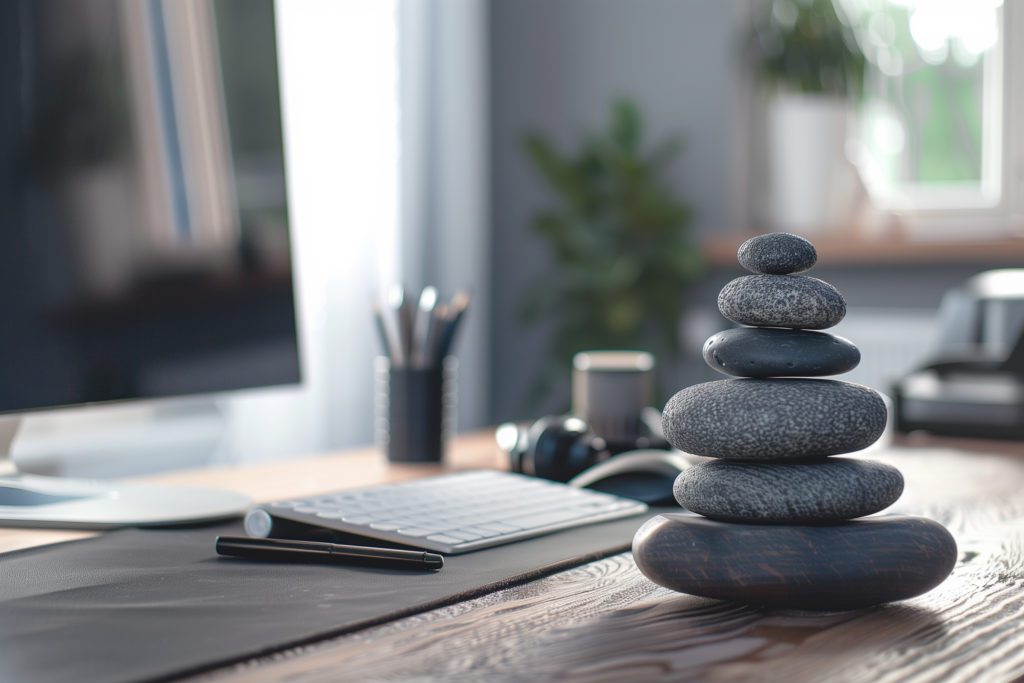
Best Practices and Tips On How To Meditate in Bed
What are the best practices and tips on how to meditate in bed for better sleep and relaxation? Read ahead for a detailed research-based guide for a peaceful night's sleep.

Meditation is a powerful tool for relaxation and stress relief, offering a mental reset that can benefit your overall health. While many people associate meditation with sitting in a quiet space, did you know that you can meditate right in your bed? Learning how to meditate in bed can help you unwind, reduce anxiety, and even improve your sleep quality.
In this article, we'll discuss the best practices and tips to guide you through a peaceful, mindful meditation practice before you sleep. Whether you're new to meditation or looking to enhance your routine, these tips will make it easier to integrate into your nightly ritual for better rest.
Why Meditate in Bed?
Meditating in bed offers a unique set of benefits. Unlike traditional meditation practices where you might sit upright, the bed provides a cozy, comfortable environment that naturally invites relaxation. When you meditate in bed, you're not only preparing your mind for sleep, but you're also calming your body, which is essential for a good night's rest.
The act of meditating in bed signals to your brain that it's time to wind down, making it easier to shift from a busy, active day to a peaceful, restful night. This practice helps reduce stress and lower levels of anxiety, which are often the culprits behind sleepless nights.
Plus, the connection between your body and the bed allows you to physically relax during your meditation. The comfort of lying down while you meditate can help release tension in your muscles and joints, aiding in better physical and mental relaxation.
The Right Environment for Bed Meditation
Before you meditate in bed, it's important to create a calming environment that encourages relaxation. A peaceful atmosphere helps your body and mind transition into a state of calm, making meditation more effective.
Start by adjusting the lighting.
Dim the lights or use a soft, warm light that doesn't strain your eyes. Avoid bright, blue-toned lights that can interfere with your circadian rhythm and make it harder for you to relax. If your room feels cluttered, take a moment to tidy up. A clean, organized space can reduce distractions and create a sense of mental clarity.
Comfort is key in bed meditation.
Adjust your pillows and blankets so that you feel fully supported and at ease. Decide on the position that is comfortable for you. Whether you want to lie on your back or side, it's totally your choice. Even if you want to meditate while sitting on your bed, you can do that. Be sure to use pillows to support your neck and back to avoid any discomfort during your practice.
Calming scents to your space
Essential oils like lavender or chamomile can help set the tone for a peaceful meditation and better sleep. With the right environment, you'll feel more at ease, making it easier to meditate in bed and drift off into a peaceful slumber.
Meditation Techniques to Try in Bed
Now that your environment is ready let's discuss some simple and effective meditation techniques to try in bed. These practices are designed to help you relax your body and mind, preparing you for a restful sleep.
1. Breathing Exercises:
One of the easiest ways to start meditating in bed is through deep breathing. A simple technique is the "4-7-8" method: inhale for 4 seconds, hold your breath for 7 seconds, and exhale for 8 seconds. This rhythmic breathing calms the nervous system and helps release tension in your body. It's a great way to focus your mind and ease into a more relaxed state.
2. Progressive Muscle Relaxation (PMR):
Progressive Muscle Relaxation is an excellent way to release physical tension. Start by focusing on one muscle group at a time, such as your feet, legs, or arms. Tense the muscles for a few seconds, then slowly release. This technique helps to reduce stress by promoting relaxation throughout the body.
3. Guided Meditation:
If you find it hard to focus, a guided meditation can be incredibly helpful. Pillow offers audio tracks specifically designed to help you relax and meditate in bed. These guided sessions often include calming music and instructions to help you focus on your breath, body sensations, or visualization.
4. Mindfulness Meditation:
Mindfulness meditation involves focusing your attention on the present moment without judgment. In bed, you can focus on the feeling of your body against the bed or the sounds around you. Whenever your mind starts to wander, gently bring your focus back to your breath or body sensations.
5. Visualization Techniques:
Visualization can be a powerful tool to ease stress and anxiety. Picture yourself in a peaceful place, like a beach or a forest, and immerse yourself in the calming sights and sounds of that environment. This can help distract your mind from worries and promote relaxation.
Tips for Enhancing Your Meditation Practice in Bed
To make your meditation in bed more effective, here are a few tips that can help enhance your experience:
If you're new to meditation, begin with just 5 to 10 minutes each night. As you become more comfortable, you can gradually extend the time.
Consistency is key when it comes to meditation. Try to make it a part of your nightly routine so that your body and mind come to expect it as a cue for relaxation.
Eliminate distractions as much as possible. Turn off your phone or put it on "Do Not Disturb" mode. Avoid any heavy conversation or exciting activities before meditating.
Different meditation techniques work for different people, so experiment with what feels best for you. Some nights you might prefer a breathing exercise, while other nights you might opt for a visualization or progressive relaxation. Find what resonates with you.
The Bottom Line
Meditating in bed is a simple yet powerful way to calm your mind and body, making it easier to transition into a restful sleep. Remember to create a peaceful environment, experiment with different techniques, and start small to make meditation a regular part of your bedtime ritual. No matter which technique you choose, practicing how to meditate in bed can offer lasting benefits for your mental and physical well-being.
FAQ
Is it okay to meditate lying down, or should I sit up in bed?
While lying down is great for relaxation, it can sometimes lead to sleep. Sitting up with support can help maintain focus and prevent drowsiness. If lying down, try keeping your eyes slightly open or using a specific hand position to stay mindful during the practice.
How can I prevent discomfort or stiffness while meditating in bed?
Ensure your mattress and pillows provide proper support for your spine and neck. A small cushion under the knees can relieve pressure. Gentle stretching before meditation can loosen tight muscles, while changing positions occasionally can prevent stiffness, making meditation more comfortable and effective.
Are there any risks associated with meditating in bed?
The biggest risk is falling asleep unintentionally, which can make it harder to maintain a structured meditation practice. Additionally, poor posture can lead to discomfort. To counteract these issues, sit up or adjust your posture, set a meditation timer, and use mindfulness techniques to stay present.
How long should a typical bed meditation session last?
If you're new to meditation, start with 5 to 10 minutes to build consistency. As you get more comfortable, you can extend sessions to 20 or 30 minutes. If using meditation for sleep, there's no time limit—let yourself drift off naturally. The key is consistency rather than length.
Can meditating in bed help with nightmares or night anxiety?
Yes, meditation can reduce nighttime anxiety and stress, which often trigger nightmares. Techniques like guided visualization, deep breathing, and progressive muscle relaxation can help calm the nervous system, making your sleep environment more peaceful and decreasing the chances of distressing dreams.
Should I meditate in bed even if I wake up in the middle of the night?
Yes, if you wake up and struggle to fall back asleep, meditation can help by quieting the mind. Body scans, slow breathing, or focusing on a mantra can reduce restlessness. Avoid checking your phone or turning on bright lights, as these can disrupt your body's natural sleep cycle.
What are the best times to meditate in bed for maximum benefits?
The best times are before sleep to calm the mind and prepare for rest, or upon waking to start the day with a clear and peaceful mindset. If you meditate at night, focus on relaxation techniques. In the morning, opt for mindfulness or breathing exercises to energize your mind and body.
FAQ
Is it okay to meditate lying down, or should I sit up in bed?
While lying down is great for relaxation, it can sometimes lead to sleep. Sitting up with support can help maintain focus and prevent drowsiness. If lying down, try keeping your eyes slightly open or using a specific hand position to stay mindful during the practice.
How can I prevent discomfort or stiffness while meditating in bed?
Ensure your mattress and pillows provide proper support for your spine and neck. A small cushion under the knees can relieve pressure. Gentle stretching before meditation can loosen tight muscles, while changing positions occasionally can prevent stiffness, making meditation more comfortable and effective.
Are there any risks associated with meditating in bed?
The biggest risk is falling asleep unintentionally, which can make it harder to maintain a structured meditation practice. Additionally, poor posture can lead to discomfort. To counteract these issues, sit up or adjust your posture, set a meditation timer, and use mindfulness techniques to stay present.
How long should a typical bed meditation session last?
If you're new to meditation, start with 5 to 10 minutes to build consistency. As you get more comfortable, you can extend sessions to 20 or 30 minutes. If using meditation for sleep, there's no time limit—let yourself drift off naturally. The key is consistency rather than length.
Can meditating in bed help with nightmares or night anxiety?
Yes, meditation can reduce nighttime anxiety and stress, which often trigger nightmares. Techniques like guided visualization, deep breathing, and progressive muscle relaxation can help calm the nervous system, making your sleep environment more peaceful and decreasing the chances of distressing dreams.
Should I meditate in bed even if I wake up in the middle of the night?
Yes, if you wake up and struggle to fall back asleep, meditation can help by quieting the mind. Body scans, slow breathing, or focusing on a mantra can reduce restlessness. Avoid checking your phone or turning on bright lights, as these can disrupt your body's natural sleep cycle.
What are the best times to meditate in bed for maximum benefits?
The best times are before sleep to calm the mind and prepare for rest, or upon waking to start the day with a clear and peaceful mindset. If you meditate at night, focus on relaxation techniques. In the morning, opt for mindfulness or breathing exercises to energize your mind and body.

Written by
Dr Aqsa
As a Medical Doctor, Dr Aqsa, uses her knowledge to craft complex medical information that is understandable to the general public. For years, she has tried to improve health literacy and empower readers with valuable health knowledge through her articles, blog posts, and educational materials.
Download Pillow
Get help
Press & News
Legal
Connect
X (Twitter)
Company
Copyright © Neybox Digital Ltd.


